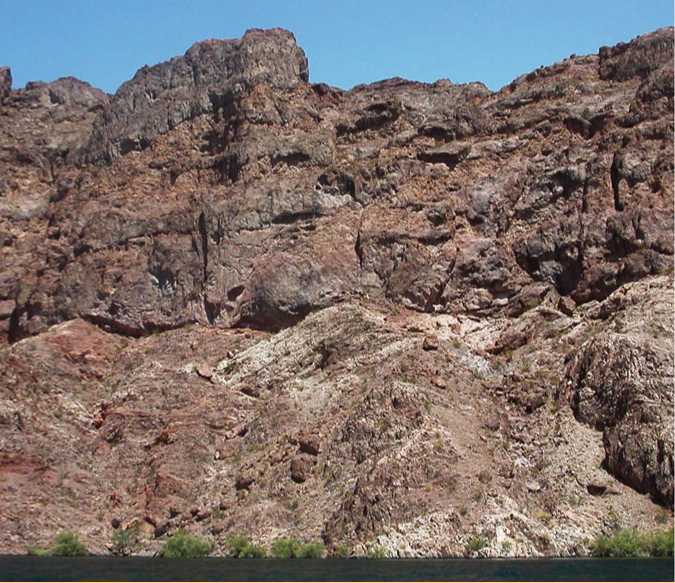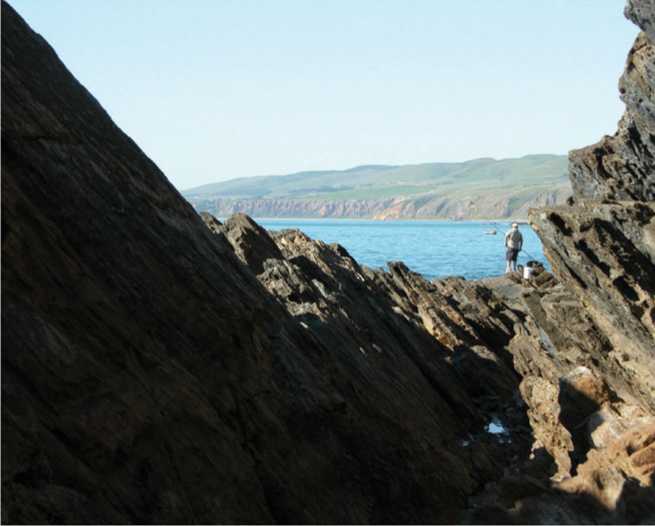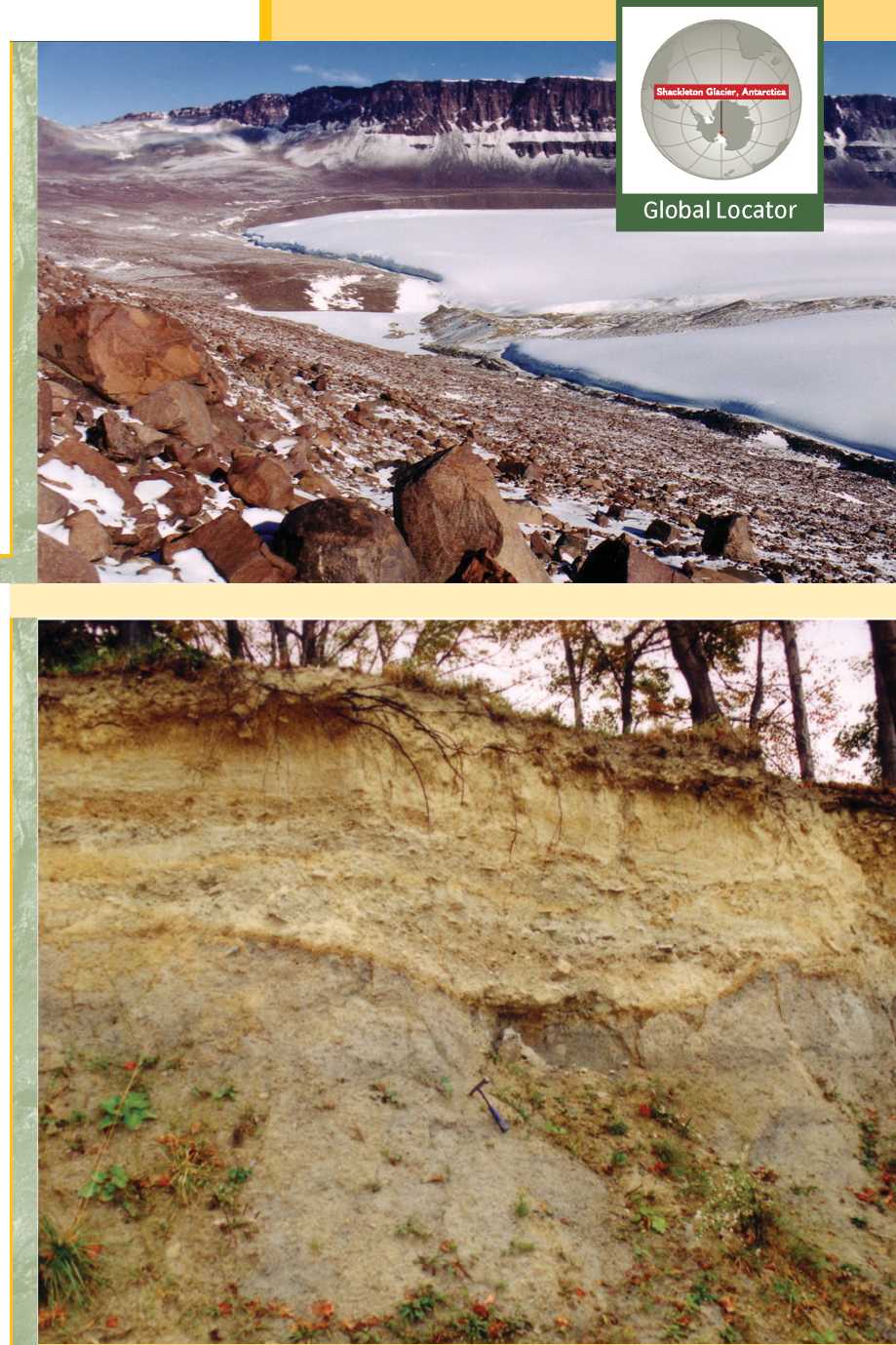
4. Are these strata undisturbed? How do you know?

1. Testing and rejecting ideas that do not agree with facts and observations about nature is a hallmark of scientific inquiry. In what ways would it be possible to test the now-rejected concept that Earth's rocks were crystallized out of a universal ocean?
2. How can you use the rock record as a tool for predicting future events, such as where earthquakes or tsunamis are likely to occur? What types of information would you need to collect from the rocks to assist in making predictions? Would you expect the types of clues left by present-day earthquakes and tsunamis to be the same as those recorded in rocks?
3. In this photograph of an unconformity (the thin line across the middle of the photograph), how can you determine whether the layers above the unconformity are younger or older than the ones below it? T
5. From the standpoint of “reading” Earth history, why is it important to determine the direction that was originally stratigraphically up?
What is happening in these pictures?
¦

Glaciers deposit unconsolidated particles of varying sizes called drift. Till is a form of unsorted drift often deposited in moraines at the fronts and sides of glaciers. Here, at the edge of the Shackleton Glacier in Antarctica, till accumulates in a moraine at the edge of the ice. Along the ridge, at least two other moraines are evident.
¦ What do these other moraines imply about the thickness of glacial ice in this region in the past?
I Pleistocene till deposit. Here, exposed along a cliff face on the Lake Erie shore of Pennsylvania are two Pleistocene sedimentary units, both of them unconsolidated. The unit below is a gray clay. Above it is a tan layer of drift that contains rocks of variable size.
What principle could you use to interpret the origin of this drift from the northeastern United States?
Applying that principle, what is the most likely origin of this drift?
Is the agent of sedimentary deposition still present? If not, what must have happened to it?
Which of the two stratigraphic units is younger? Assuming that the strata are undisturbed, what two principles allow you to make that determination?




 World History
World History









